Bryophytes of Hampshire and the Isle of Wight
North Hampshire (VC12)
Jonathan Sleath
Recording
The bryophyte flora of North Hampshire is not as rich as South Hampshire (VC11), as it doesn’t have the benefit of the New Forest or the interesting coastal areas, but there are still many habitats of interest to bryologists and the opportunity for further work. Currently there are 433 taxa recorded (426 species), comprising 95 liverworts (including two not seen since 1970), 336 mosses (16 not seen since 1970) and two hornworts. The total of 433 taxa is just over 84% of the county total of 513, but surprisingly 29 taxa have been recorded in VC12 but not in VC11. Although several of these are one-off historical records, important species which are still extant include the liverworts Jungermannia atrovirens, Oleolophozia perssonii and Ricciocarpos natans, and the moss Campylostelium saxicola.
A glance at the geological map shows that most of the vice-county is on the chalk, with little in the way of surface water apart from where the chalk plateau is incised by rivers which are in part fed from springs. In some places the chalk is overlain by clay-with-flints. The Upper Greensand consists of a calcareous sandstone known as Malmstone, which forms an escarpment and gives way to Gault Clay to the east. Further to the east this is replaced by the softer acid sands and clays soils of the Lower Greensand. The Eocene clays, gravels and sands in the north-east also have an acid or neutral character.
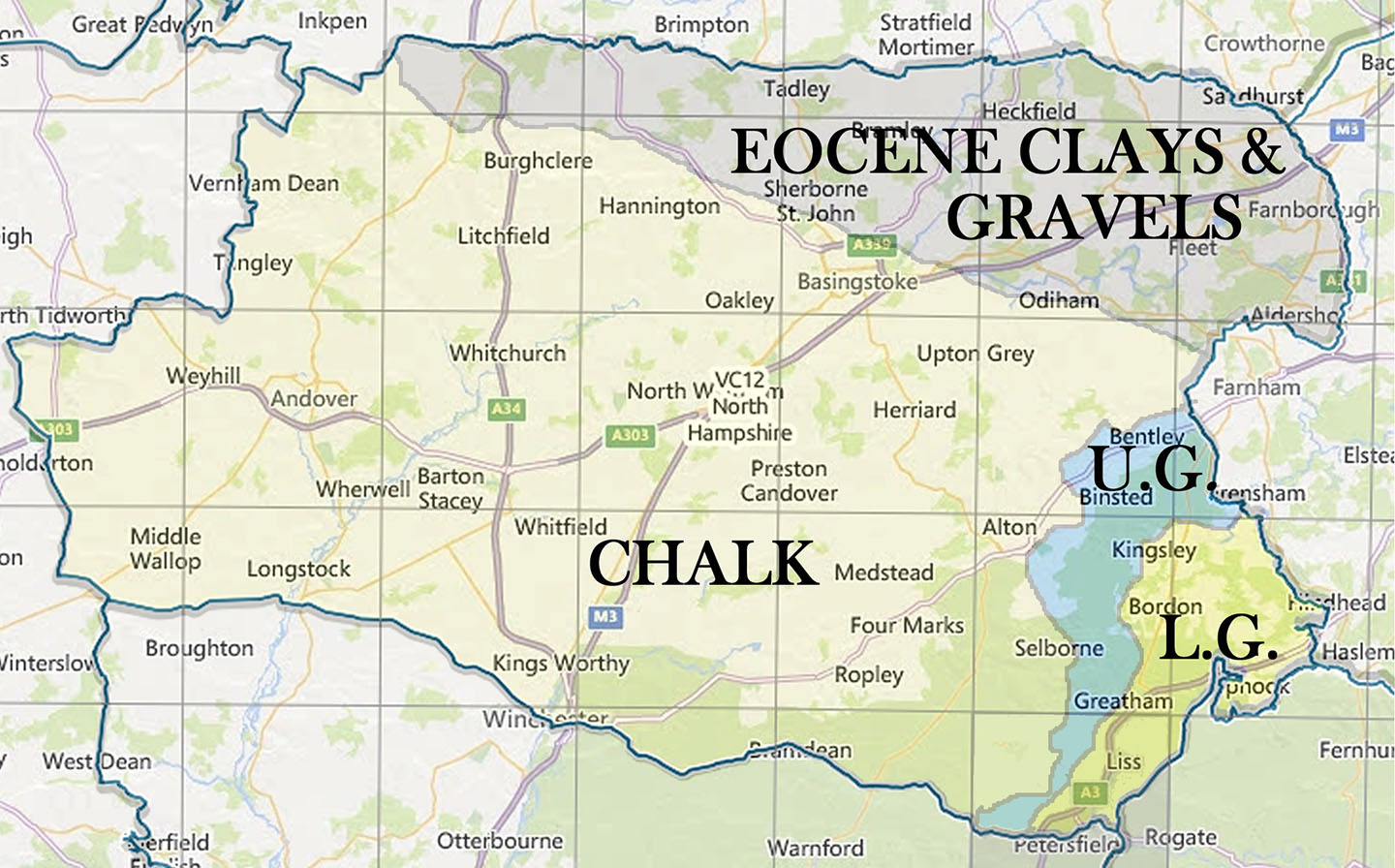
U.G. = Upper Greensand and Gault; L.G. = Lower Greensand
Contains Ordnance Survey data © Crown copyright and database right 2025
The earliest named records for North Hampshire date from 1760 and are attributed to Revd W.L.W. Eyre of Swarraton and Mr A.B. Jackson of Newbury. There are 50 or so records from the nineteenth century, including interesting species such as Targionia hypophylla. There was little recording in the early twentieth century until Ted Wallace became active in the vice-county in the 1950s–1980s. In the 1980s and 1990s Alan Crundwell, having moved from Glasgow University to Headley Down on his retirement in 1983, contributed many records. He died in 2000 and in the subsequent 20 years or so other bryologists including Francis Rose, June Chatfield, Ron Porley, Andrew Branson and Fred Rumsey continued the bryological exploration of the vice-county, often in conjunction with the BBS Southern Group which continues to hold meetings in the area. In recent years John Norton has contributed many records, and the current VC12 recorder, Jonathan Sleath, is still exploring the area.
Notable habitats
The Chalkland
Most of the chalkland is agricultural and managed for arable crops or grass ley. There are few records of interest from the improved grasslands, and most of the arable fields are ploughed in the autumn and heavily fertilised giving a rather impoverished bryophyte flora, although they have not been extensively studied. In places where the chalk is capped by clay the conditions are more acid and more acidophilic species such as Weissia longifolia s.str. can be found.
At the margins of the fields, disturbed chalky soil can be interesting with Dicranella howei and Microbryum rectum being quite common, and Tortula protobryoides and Microbryum curvicolle occasional. Richer still are the old chalk pits which are scattered across the vice-county, although many are becoming overgrown. Old Burghclere lime quarry is a good example and is one of the few sites for Plasteurhynchium striatulum in the vice-county. Typical plants of chalk quarries include Aloina aloides, Microbryum species, Seligeria calycina and S. calcarea (less commonly) on pieces of chalk, Mesoptychia turbinata and M. badensis. Ropley lime quarry also has the liverwort Oleolophozia perssonii. Unless shaded, the quarry floor usually has some patches of chalk grassland flora where Homalothecium lutescens can be dominant, but also other characteristic plants such as Flexitrichum gracile and Campylium chrysophyllum.
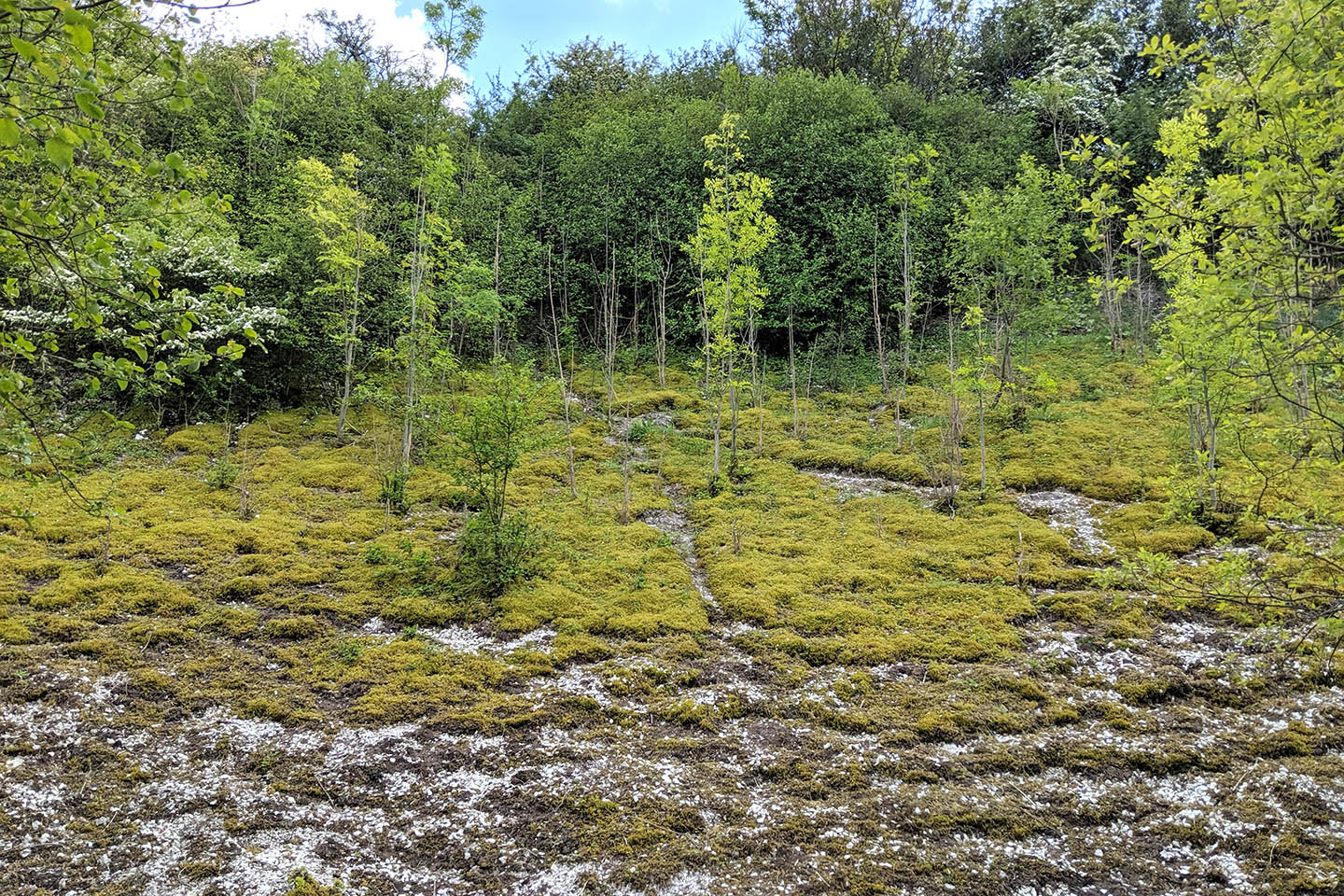
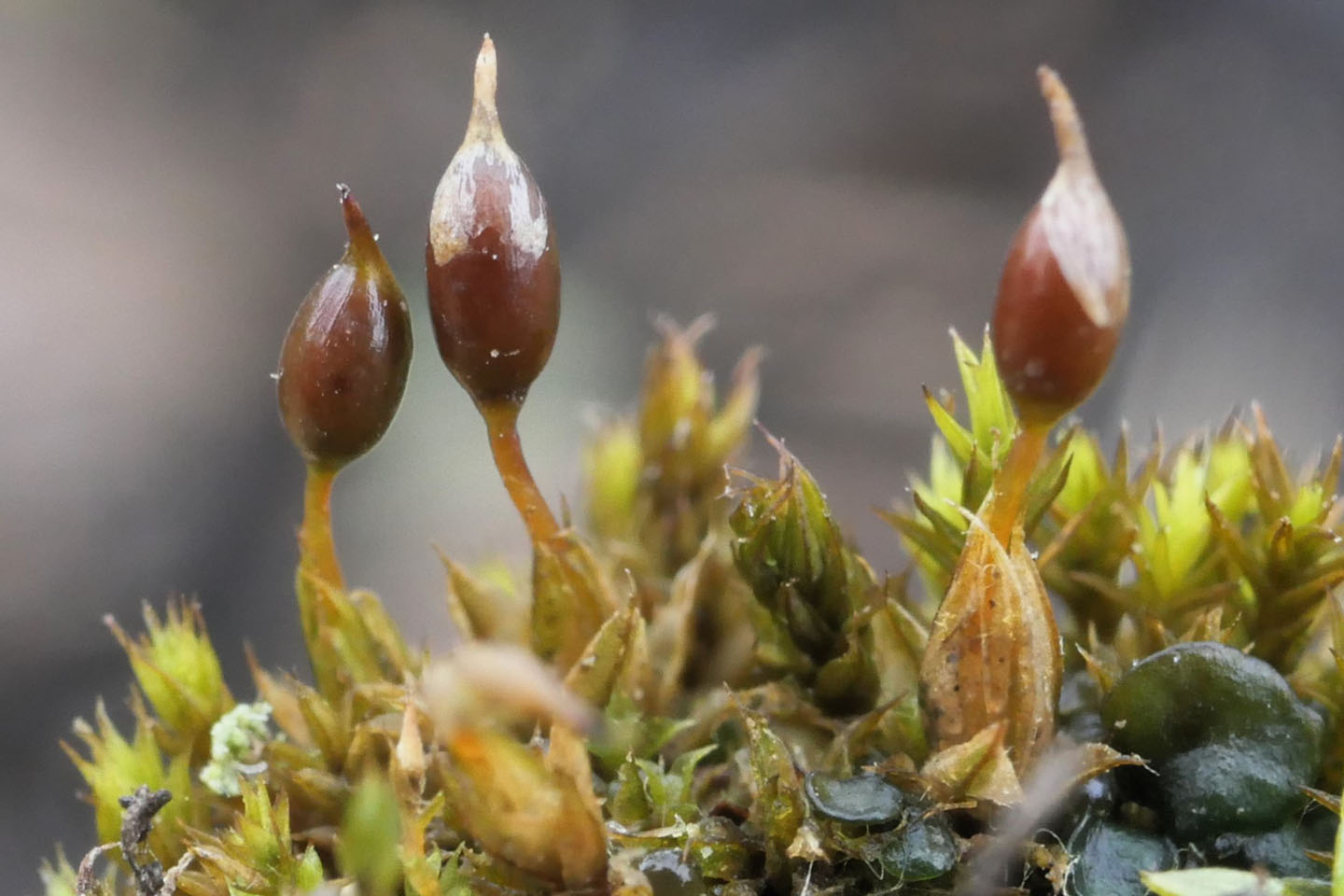
Richer still are the areas of chalk grassland, usually in nature reserves, that are also known for their vascular plant flora. Particularly good examples are the Micheldever spoil heaps (the only locality for Jungermannia atrovirens in Hampshire and Gymnostomum viridulum in the vice-county), Beacon Hill (near Highclere), Noar Hill and Stockbridge Down. Additional notable plants include Entodon concinnus and Abietinella abietina. Weissia angustifolia and W. brachycarpa var. obliqua are usually to be found as well. Bryum torquescens is another chalkland specialist and is abundant at Ladle Hill.
Special mention should be made of the military areas in the extreme west of the vice-county, which are extensions of Salisbury Plain, and have a particularly good flora. Porton Down is a very rich site, but access is very restricted. Thise area has most of the species mentioned, plus Brachythecium glareosum, Aloina rigida, Pottiopsis caespitosa and the calcicole leafy liverwort Scapania aspera. More accessible are the MOD training areas at Shipton Bellinger and Perham Down which also have Oleolophozia perssonii on the disturbed tracksides and Campylophyllopsis calcarea on the exposed roots of old beech trees.
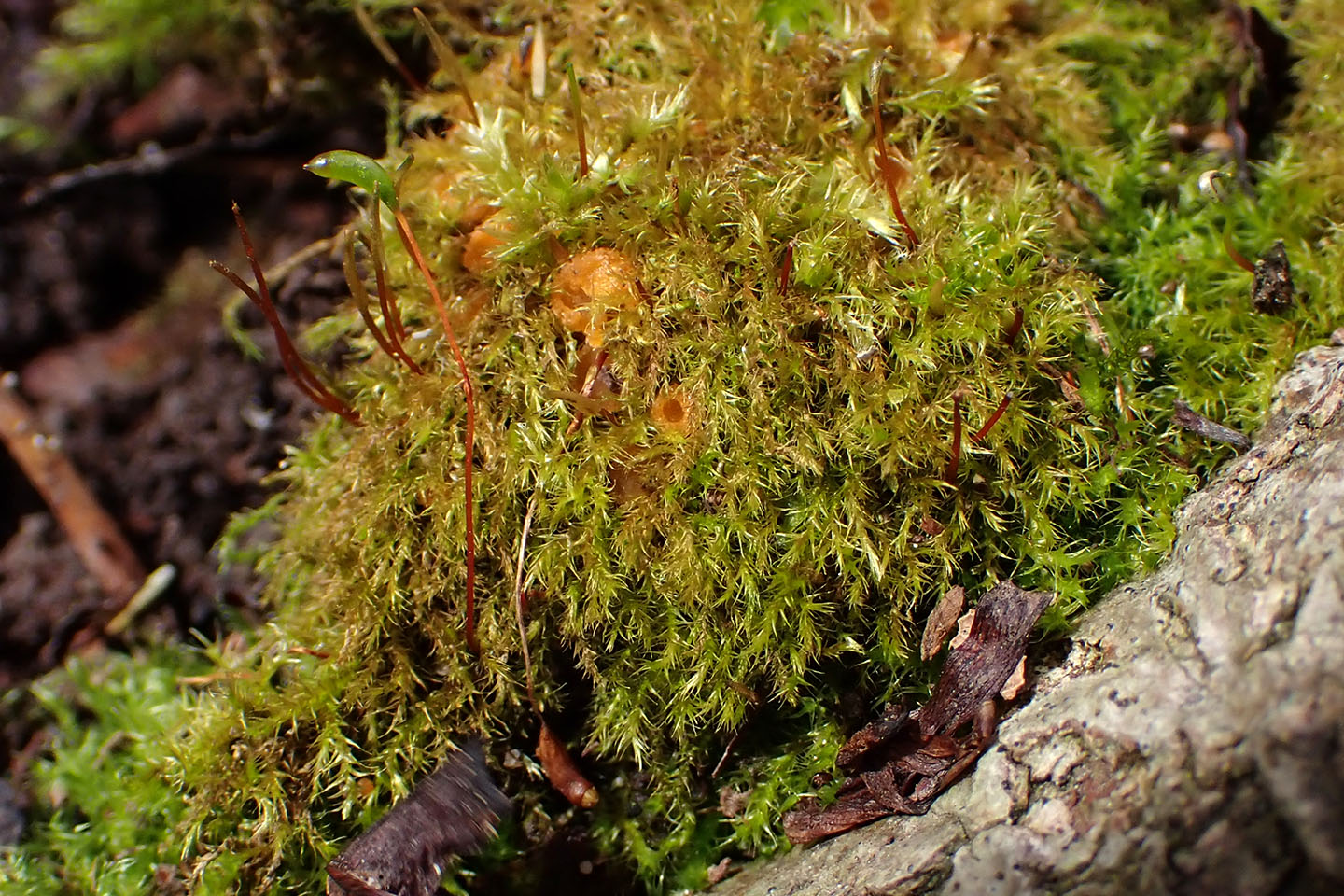
The wooded chalk hangers in the east, in the region of Selbourne, have a good range of species and are in need of further exploration. Uncommon species recorded from this area include Oxyrrhynchium schleicheri and Taxiphyllum wissgrillii.
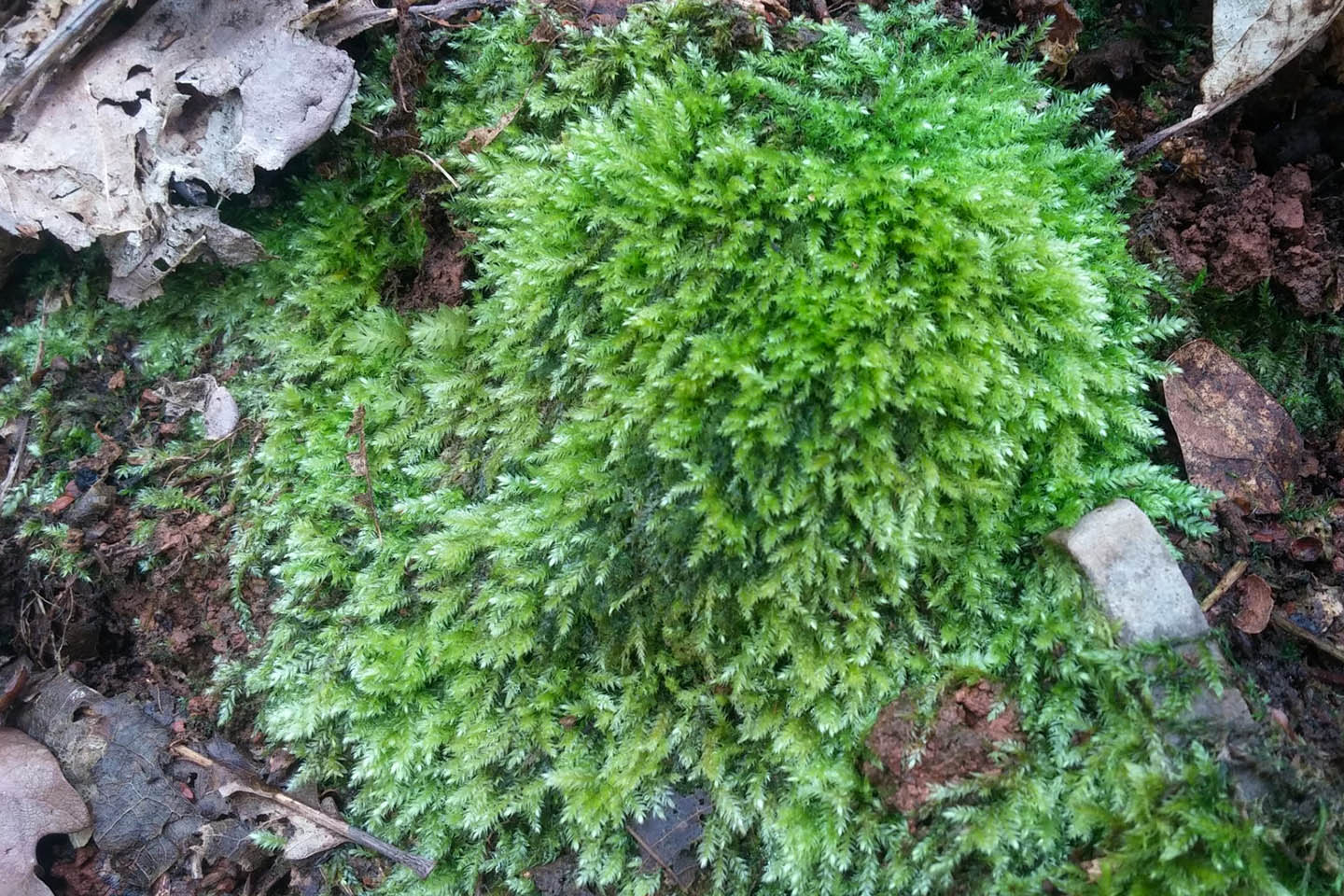
There are a number of woodlands which have a good range of species, and sometimes the unexpected can turn up. Examples include Antitrichia curtipendula in Chawton Park Wood near Alton and Brachythecium salebrosum in Micheldever Wood.
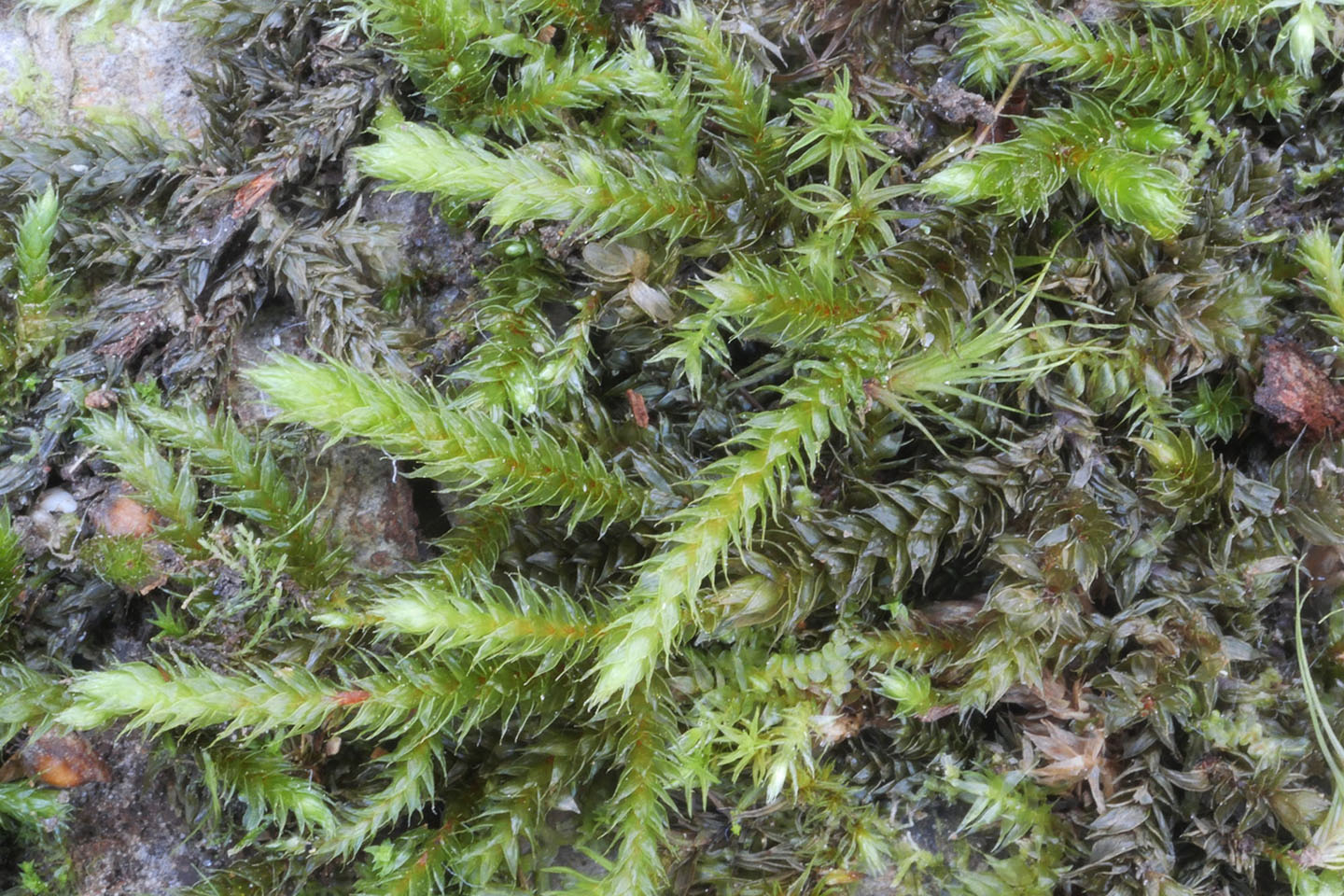
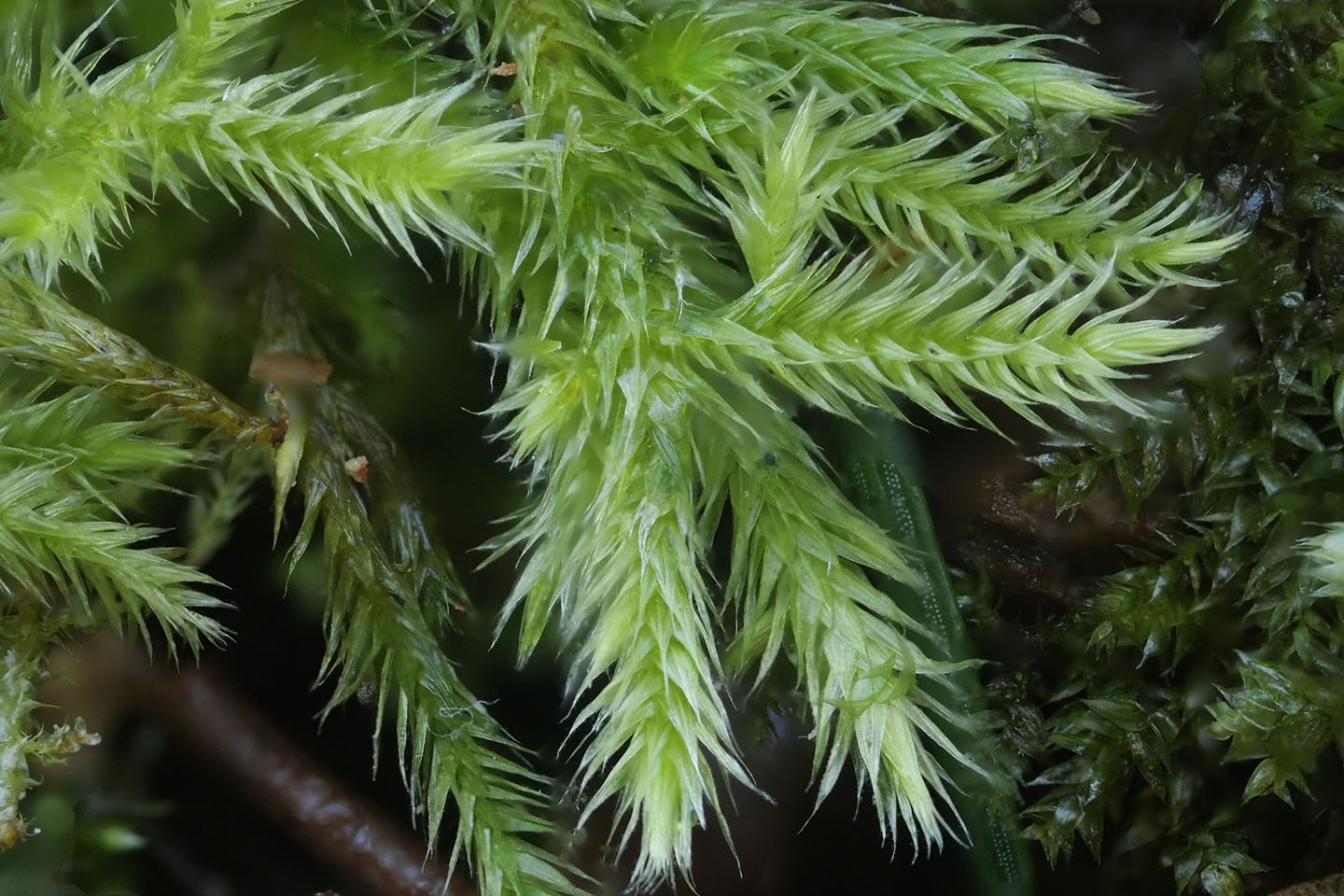
Upper Greensand
The calcareous malmstone sandstone escarpment at the east of the vice-county is a prominent feature but there is little rock exposed. A good area is around Steep where shaded rocks support colonies growth of Leptobarbula berica and Gyroweisia tenuis, together with Rhynchostegiella curviseta in damper areas. Leptobarbula seems to be commoner in VC12 than in VC11, particularly on damp masonry in churchyards. In one of the small wooded valley, Campylostelium saxicola grows on rocky ledges.
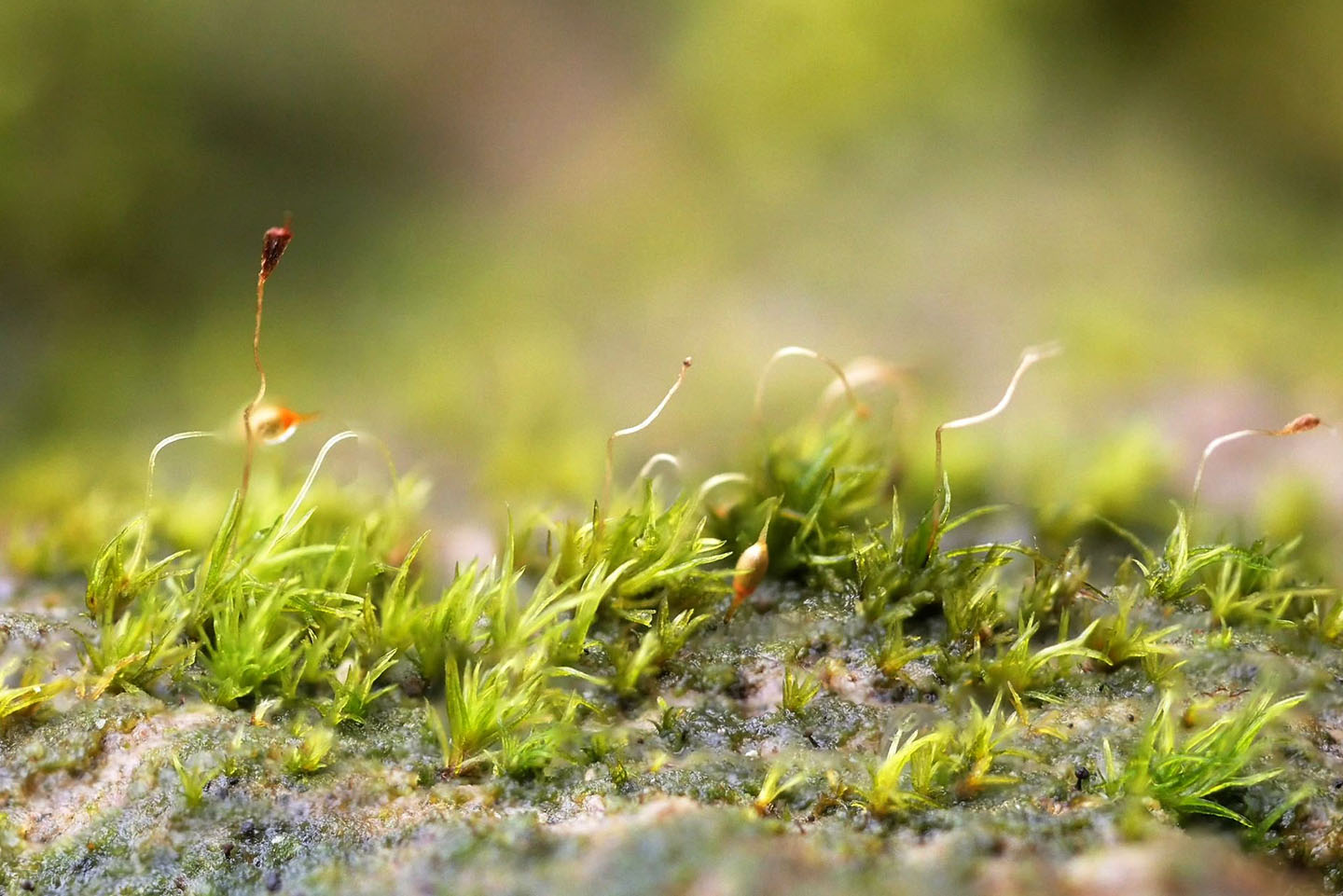
Lower Greensand
The acid sands and clay soils of the Lower Greensand support an extremely rich complex of mires and heaths and are often in military training sites, many of which are still active. The disturbance maintains a wide range of microhabitats and niches for bryophytes. The mires support a wide range of Sphagnum species as well as the bog liverworts including Odontoschisma sphagni, Cephalozia connivens, C. macrostachya var. macrostachya and Calypogeia sphagnicola. Particularly noteworthy is the large area of Woolmer Forest (not fully explored) which was the first site in Britain for the liverwort Protolophozia herzogiana. This has not been seen recently but there are other interesting liverworts here such as Odontoschisma denudatum and Fossombronia foveolata. The military have abandoned the Hogmoor Inclosure near Bordon but this is another excellent heathland site with records of Pohlia bulbifera, Dicranum spurium, Sanionia uncinata, Lophocolea semiteres and Riccia huebeneriana at the edge of one of the pools. Shortheath Common is another good site supporting a range of wet and dry heath species, including Leptodontium flexifolium, Hypnum imponens and Ptilidium ciliare.

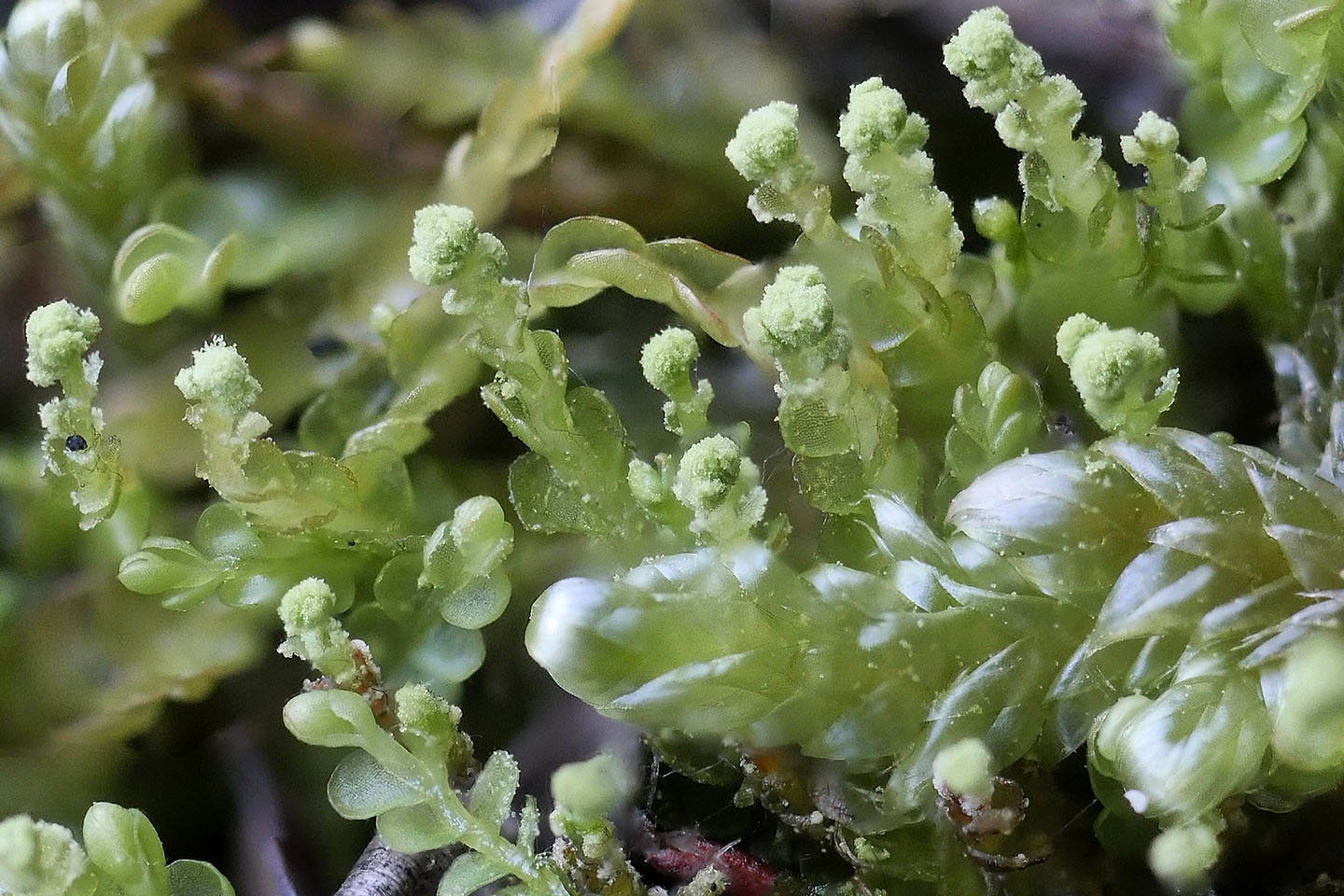

Eocene clays and gravels
The junction between the chalk and the London Clay in the northeast of the vice-county creates a number of fen habitats, the best known being Greywell Moor, where the calcareous waters feed into the Basingstoke canal. Typical species include Campylium stellatum, Calliergon giganteum, Palustriella commutata, Rhizomnium pseudopunctatum and Plagiomnium elatum. Ricciocarpos natans occurs here and in the Basingstoke canal. At Eelmoor Marsh at Farnborough, base rich water from the canal seeps into the edge of the site and creates some interesting flushes which are the only sites in VC12 for Scorpidium cossonii. There is an extensive complex of mires, wet and dry heaths and drainage channels where Kurzia sylvatica was recently found, new for the vice-county.
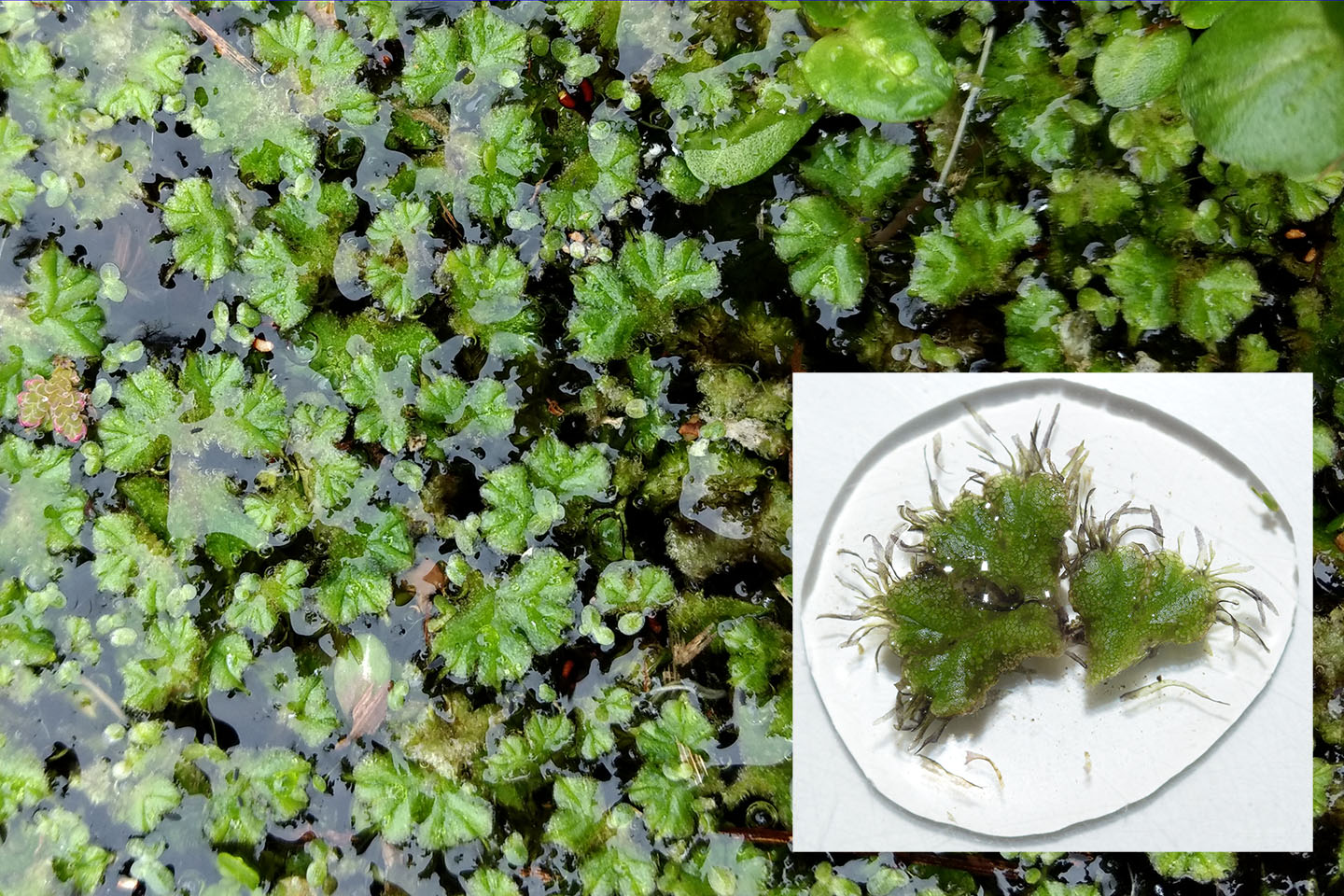
Much of this area is quite clayey with arable fields which have not been fully explored bryologically. In the north and eastern area there are a number of commons and heaths which represent the extension of the Surrey Heaths. The richest area appears to be the valley mire at Castle Bottom NNR, Blackbushe. Unfortunately much of the habitat is becoming shaded out by dense stands of Bog Myrtle but there is a good range of species and it is the only VC12 site for Entosthodon obtusus and Marchantia polmorpha var. polymorpha.
Man-made habitats
Man-made habitats including churchyards, old buildings and urban streets are likely to have been well explored in the past by the late Alan Crundwell and others, but not so much recently. The mediterranean thallose liverwort Targionia hypophylla occurs in the Headley area, including the walls of the church where Alan Crundwell is buried. Old walls around the county town of Winchester, which straddles the vice-county boundary, support Didymodon umbrosus but so far Grimmia orbicularis has only been recorded from the VC11 side. Hennediella macrophylla, a species which is spreading in urban areas in habitats such as trampled amenity grassland, has recently been recorded in a few places in the city including the Tesco car park. Hedwigia ciliata var. ciliata was recorded recently from roof tiles in the small town of Alresford and only 500m away H. stellata was recorded growing epiphytically on an orchard apple tree – neither have been recorded in VC11.
